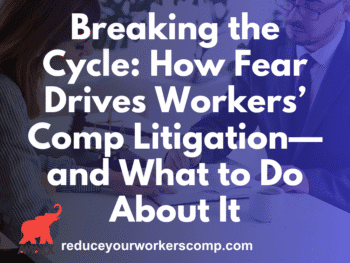Tom Robinson, J.D., primary upkeep writer for Lexis Nexis’s Workers’ Compensation Law Practice Area and a noted authority on workers’ compensation law, has found another interesting case for us this week.
Here’s what happened:
A worker fractured his left hip in a work-related auto accident. Almost two years later, while using a heating pad to alleviate soreness to his hip, he fell asleep and sustained third-degree burns to the hip. He sought additional benefits for the “superadded” injury, contending it was “related to” his earlier work-related injury, that the use of the heating pad was reasonable and necessary for the hip injury. The Board disagreed, finding the burn did not result from prescribed medical treatment and was not a natural consequence of the hip injury. On further review, a state superior court ruled the burn injury was compensable because the heating pad was used as “a consequence” of the original hip injury.
Here’s how the court ruled:
In City of Atlanta v. Roach, 2009 Ga. App. LEXIS 440 (April 8, 2009), the Court of Appeals of Georgia (Second Division) held that as there was some evidence to support the Board’s findings that the heating pad, not having been prescribed by a physician, was not a reasonable and necessary treatment under O.C.G.A. § 34-9-200(a), and that the burn arose from a combination of the worker’s use of the pad and falling asleep while lying on it, the superior court was bound by the Board’s findings. The appellate court reversed the judgment of the superior court insofar as it ruled that the worker sustained a superadded injury.
From my perspective, this is admittedly a close case. Under the “Direct and Natural Consequence Rule” [see generally Larson’s Workers’ Compensation Law § 10.01], a subsequent injury–whether an aggravation of the original injury or a new and distinct injury–is compensable if it is the direct and natural result of a compensable primary injury. (workersxzcomp) Two factors seem to have been important in breaking the causation chain here: (1) the fact that the burn occurred two years after the compensable injury, and (2) the fact that no physician had prescribed or suggested heat treatment to the hip. Practitioners should note that had the Board made its factual determination in favor of the injured employee, the Court of Appeals would likely have found substantial evidence supported that decision as well.
See generally Larson’s Workers’ Compensation Law §§ 10.01, 10.04, 130.05.
Tom Robinson, J.D. is the primary upkeep writer for Larson’s Workers’ Compensation Law (LexisNexis) and Larson’s Workers’ Compensation, Desk Edition (LexisNexis). He is a contributing writer for California Compensation Cases (LexisNexis) and Benefits Review Board – Longshore Reporter(LexisNexis), and is a contributing author to New York Workers’ Compensation Handbook(LexisNexis). Attorney Robinson is an authority in the area of workers’ compensation and we are happy to have him as a Guest Contributor to Workers’ Comp Kit Blog. Tom can be reached at: compwriter@gmail.com.
http://law.lexisnexis.com/practiceareas/Workers-Compensation
Try the WC Cost Calculator to www.ReduceYourWorkersComp.com/calculator.php
Look at WC 101 for www.ReduceYourWorkersComp.com/workers_comp.php
Workers’ Comp Kit® is a web-based online Assessment, Benchmarking and Cost Containment system for employers. It provides all the materials needed to reduce your costs significantly in 85% less time than if you designed a program from scratch.
Do not use this information without independent verification. All state laws are different. Consult with your corporate legal counsel before implementing any cost containment programs.
©2008 Amaxx Risk Solutions, Inc. All rights reserved under International Copyright Law. If you would like permission to reprint this material, contact Info@WorkersCompKit.com

















